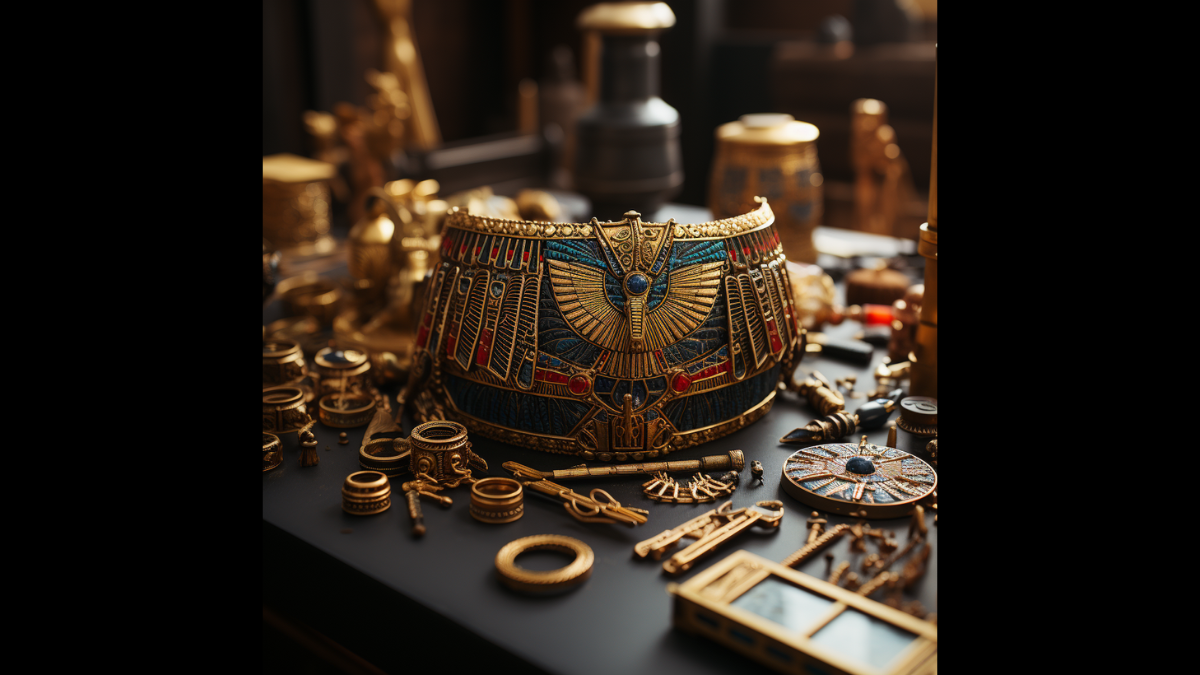When we think of jewelry, the first image that may come to mind is its dazzling beauty or perhaps its value. However, delving deeper into the annals of history, jewelry has played a pivotal role not just as a decorative ornament or a symbol of status, but also as a profound source of inspiration in the realms of art, culture, and design.
Jewelry as a Reflection of Civilizations
Every piece of jewelry encapsulates within its delicate design a story, a sentiment, or a significant event. When we rewind time and journey through the corridors of ancient civilizations like the Sumerians or the Egyptians, we realize that their jewelry was not just a display of wealth or craftsmanship, but a reflection of their beliefs, practices, and societal constructs.
The Sumerian Legacy
The Sumerians, one of the earliest known civilizations, have bequeathed us with intricate pieces of jewelry that offer a captivating glimpse into their lives. Their jewelry, often made from gold, lapis lazuli, and carnelian, had intricate depictions of nature, gods, and everyday life. The renowned ‘Ram in a Thicket’, an art piece from the ancient city of Ur, is a resplendent example. This statue, adorned with gold, lapis lazuli, and other gemstones, is not merely an ornament but serves as an embodiment of the Sumerians’ artistic endeavors, their spirituality, and their intricate metallurgical skills.
The Egyptian Enigma
The land of pyramids and pharaohs, ancient Egypt, has always enthralled us with its rich cultural tapestry and its passion for the afterlife. Jewelry was not just an ornament; it was an amulet, a protector, and a bridge to divinity. One of the most iconic pieces of jewelry that spring to mind is the ‘Bust of Tutankhamun’, a mesmerizing representation of the young pharaoh. Adorned with a lapis lazuli collar and a golden headdress, this art piece speaks of Egypt’s obsession with the afterlife, the divine, and the grandeur of their rulers. Their jewelry, with its scarabs, Eye of Horus, and the ankh, was not just metal or stone; it was a canvas that held within its confines tales of gods, beliefs, and a civilization’s soul.

Inspiration for Modern Times
Today, the legacy of these ancient civilizations continues to inspire jewelers, designers, and artists worldwide. Whether it’s the blue hue of lapis lazuli finding its way into modern jewelry designs or the iconic Egyptian motifs making a resurgence in fashion collections, the footprints of ancient jewelry artistry are everywhere.
Moreover, it isn’t just about aesthetic appeal. The stories, beliefs, and sentiments carried by these age-old pieces serve as a foundation for modern narratives. Contemporary artists and designers often find themselves enchanted by the tales these pieces tell, driving them to create pieces that are a fusion of the old and new.
Conclusion
Jewelry, across ages and civilizations, has been more than just adornment. It has been a muse, a canvas, and a storyteller. It reflects a civilization’s heart, its beliefs, its aspirations, and its artistic inclinations. The intricate designs of the Sumerians or the grand pieces of the Egyptians are not just remnants of a bygone era; they are timeless inspirations, reminding us of our shared history, our collective creativity, and the power of jewelry to transcend time, weaving tales of inspiration for generations to come.
